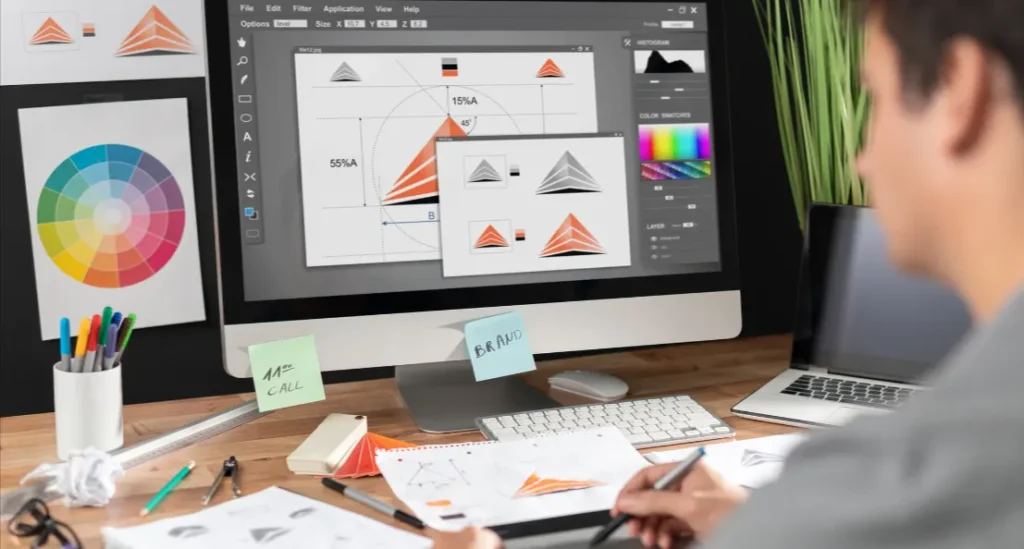In the ever-evolving landscape of dental practice, the importance of a compelling visual identity cannot be overstated. A dental logo serves as the cornerstone, representing professionalism, trust, and the essence of the dental brand. In this blog, we delve into the art and impact of logo design for dental, exploring the key elements, trends, and the significance of a well-crafted logo for dental practices.

The Significance of Dental Logo:
1. Professionalism and Trust:
- A logo is often the first visual encounter a patient has with a dental practice. A professionally designed logo exudes trust and establishes an immediate sense of professionalism, instilling confidence in potential patients.
2. Brand Recognition:
- Consistent branding is crucial for any business, and dental practices are no exception. A well-designed logo contributes to brand recognition, making the practice easily identifiable and memorable among patients and the community.
3. Reflecting Practice Values:
- Dental logos are not just graphics; they are visual representations of the values and ethos of a dental practice. Whether emphasizing innovation, compassion, or expertise, the logo communicates these principles to the audience.
4. Setting the Tone:
- The color palette, typography, and imagery in a logo play a significant role in setting the tone for the practice. Whether aiming for a modern, friendly, or sophisticated vibe, the logo communicates the practice’s personality.
Key Elements of Dental Logo Design:
1. Tooth Imagery:
- Incorporating tooth imagery is a classic and effective element in logos. It instantly communicates the nature of the practice and establishes a connection with dental services.
2. Subtle Symbols:
- Subtle symbols such as smiles, dental tools, or abstract representations can add depth to a dental logo. These symbols evoke positive emotions and create a memorable visual impact.
3. Typography:
- The choice of typography is crucial. Clean, modern fonts often convey professionalism, while playful fonts may communicate a more relaxed atmosphere. The typography should align with the overall brand image.
4. Color Palette:
- Colors evoke emotions and perceptions. Blue and green are often associated with trust and health, while white suggests cleanliness. The color palette should align with the practice’s values and the emotional response desired.
5. Balance and Simplicity:
- A cluttered or overly complex logo can be overwhelming. Logos benefit from balance and simplicity, ensuring that the message is clear and easily comprehensible.
Trends in Dental Logo Design:
1. Minimalism:
- Minimalist designs with clean lines and simple shapes are trending in logos for dental. These designs enhance versatility and readability across various mediums.
2. Gradient Effects:
- Gradient effects add depth and a modern touch to dental logos. Soft gradients can convey a sense of warmth and approachability.
3. Geometric Shapes:
- Geometric shapes, especially circles and hexagons, are gaining popularity. They provide a sense of stability and symmetry, reinforcing the reliability of the dental practice.
4. Monograms:
- Monogram logos, where the initials of the practice are creatively combined, offer a personalized and sophisticated touch.
Designing Your Dental Logo:
1. Define Your Brand Identity:
- Before diving into design, define your dental practice’s brand identity. Consider the values, personality, and unique selling points that you want the logo to communicate.
2. Research and Inspiration:
- Explore existing dental logos for inspiration. Identify elements you like, and think about how they align with your practice’s vision. This research phase will guide the design process.
3. Collaborate with Designers:
- Collaborate with professional graphic designers who specialize in logo design. Communicate your vision, values, and any specific elements you want to incorporate into the logo.
4. Feedback and Revisions:
- A collaborative design process involves feedback and revisions. Provide constructive feedback to the designers, ensuring that the final logo aligns seamlessly with your practice’s brand identity.

